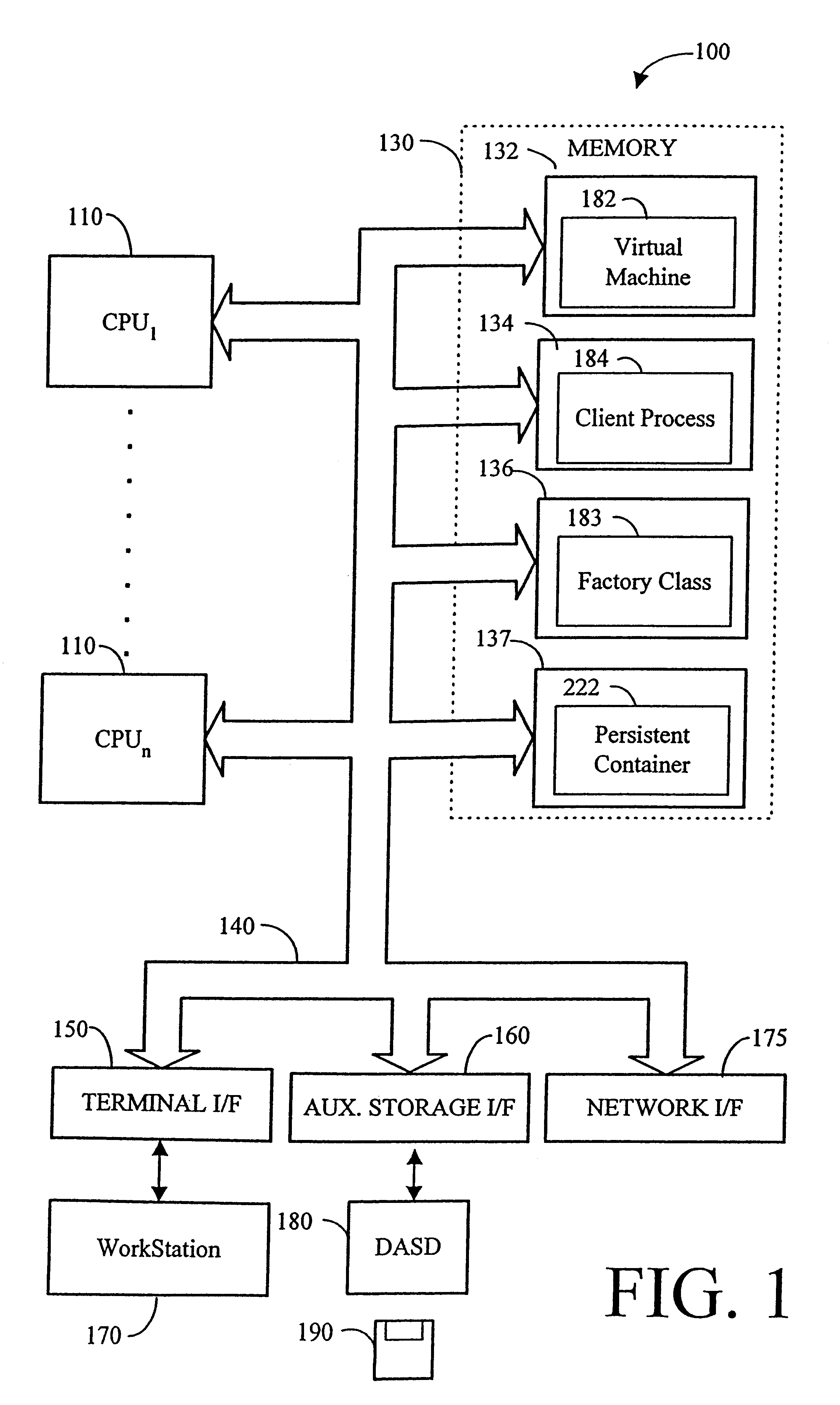Virtual machine implementation for shared persistent objects
a virtual machine and persistent object technology, applied in the field of object-oriented computer systems, can solve the problems of object persistence, object itself is destroyed, and all references to objects created by the process are los
- Summary
- Abstract
- Description
- Claims
- Application Information
AI Technical Summary
Problems solved by technology
Method used
Image
Examples
Embodiment Construction
Referring now to FIG. 1, a computer system 100 in accordance with a preferred embodiment of the present invention includes: a plurality of Central Processing Units (CPUs) 110; a terminal interface 150; an auxiliary storage interface 160; a workstation 170; a Direct Access Storage Device (DASD) 180; a bus 140; and a memory 130 which includes multiple locations for containing various software programs. In this example, memory 130 includes a Virtual Machine (VM) 182 running in location 132, a client process 184 running in location 134, a Factory Class 183 in location 136, and a Persistent Container object 222 in location 137.
Client process 184 may generate various amounts of important data and may wish for this data to exist beyond its own lifetime in memory. In order for the data created by a client process 184 to exist beyond its lifetime in memory, the data must be stored persistently. Persistent storage allows data to exist beyond the lifetime of the process which created it. In th...
PUM
 Login to View More
Login to View More Abstract
Description
Claims
Application Information
 Login to View More
Login to View More - R&D
- Intellectual Property
- Life Sciences
- Materials
- Tech Scout
- Unparalleled Data Quality
- Higher Quality Content
- 60% Fewer Hallucinations
Browse by: Latest US Patents, China's latest patents, Technical Efficacy Thesaurus, Application Domain, Technology Topic, Popular Technical Reports.
© 2025 PatSnap. All rights reserved.Legal|Privacy policy|Modern Slavery Act Transparency Statement|Sitemap|About US| Contact US: help@patsnap.com



